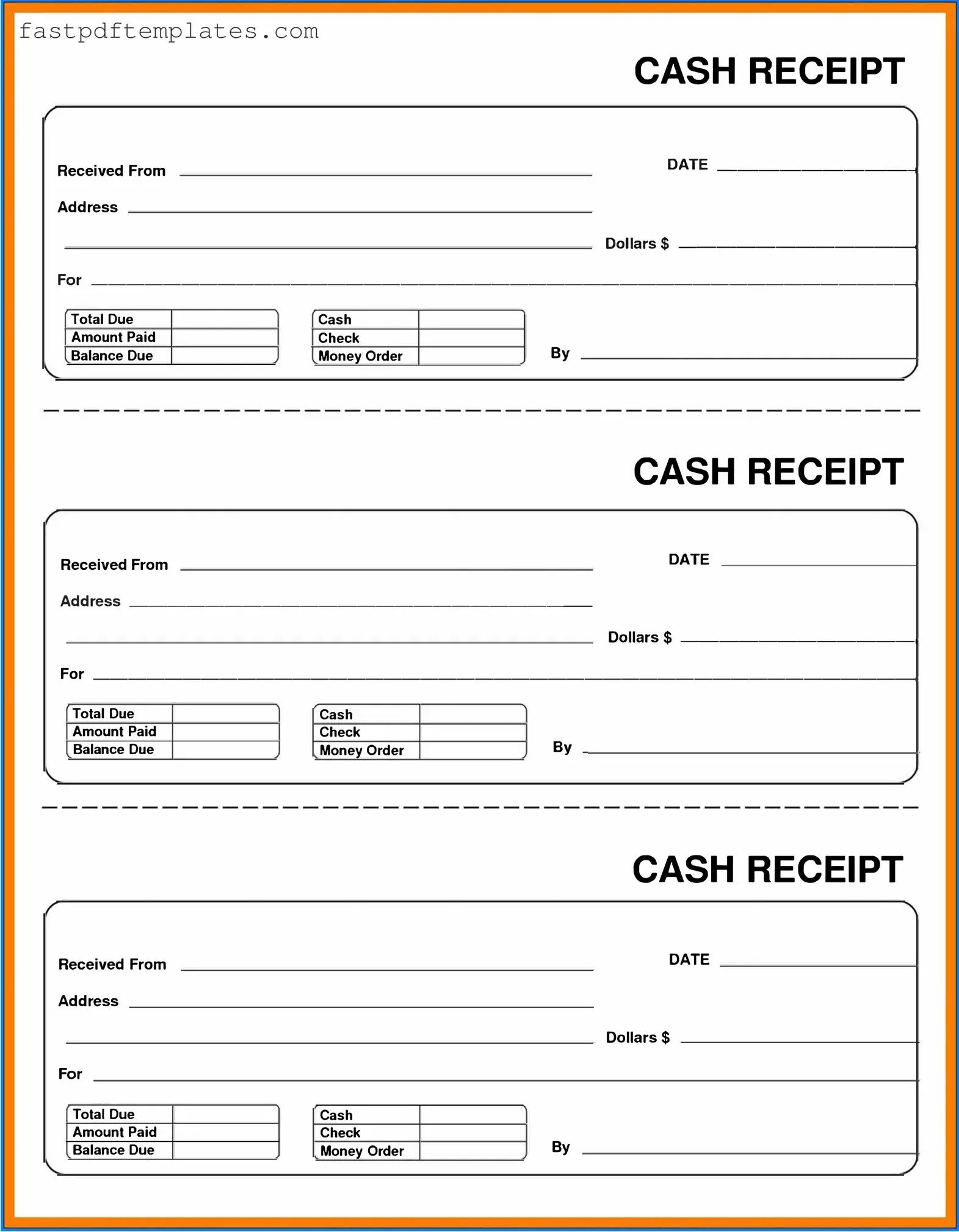The Invoice is a document that requests payment for goods or services provided. It typically includes details such as the date of the transaction, the items sold, the total amount due, and payment terms. Like the Cash Receipt form, it serves as a record of a financial transaction, but it is issued before payment is received. Both documents play a crucial role in tracking financial exchanges between parties.
The Payment Voucher is another document that functions similarly to the Cash Receipt form. This document is used to authorize a payment to a vendor or supplier. It outlines the amount to be paid, the purpose of the payment, and any relevant account information. While the Cash Receipt confirms that payment has been received, the Payment Voucher is created prior to the disbursement of funds, ensuring that payments are properly documented and approved.
The Deposit Slip is a document used when depositing cash or checks into a bank account. It includes information such as the date, account number, and amount being deposited. Like the Cash Receipt form, it serves as a record of a financial transaction. However, the Deposit Slip is specifically focused on the transfer of funds to a bank, while the Cash Receipt confirms that a payment has been made to a business or individual.
The Sales Receipt is issued to customers at the point of sale. It provides proof of purchase and details the items bought, their prices, and the total amount paid. Similar to the Cash Receipt form, the Sales Receipt serves as evidence of a transaction. However, it is typically generated immediately after a sale, while the Cash Receipt may be issued after payment has been processed in various contexts, such as accounts receivable.
The Credit Memo is a document issued to adjust a previous invoice. It indicates a reduction in the amount owed, often due to returns or billing errors. While the Cash Receipt form confirms payment, the Credit Memo serves to document adjustments to accounts. Both documents are essential for maintaining accurate financial records, but they address different aspects of the transaction process.
The Statement of Account summarizes all transactions between a customer and a business over a specific period. It includes details about invoices, payments received, and outstanding balances. Similar to the Cash Receipt form, it helps track financial interactions. However, the Statement of Account provides a broader view of the customer’s financial history with the business, while the Cash Receipt focuses on individual transactions.
The Purchase Order is a document created by a buyer to request goods or services from a seller. It outlines the items requested, quantities, and agreed prices. Although it is not a receipt, it shares similarities with the Cash Receipt form in that both documents facilitate financial transactions. The Purchase Order initiates the process, while the Cash Receipt confirms that the transaction has been completed.
The Expense Report is used by employees to document and request reimbursement for business-related expenses. It details the nature of the expenses, amounts, and supporting receipts. Like the Cash Receipt form, the Expense Report serves as a record of financial transactions. However, it focuses on expenditures made by employees rather than payments received by a business.
The Acknowledgment of Payment is a document that confirms receipt of payment for services rendered or goods sold. It includes the date, amount received, and any relevant transaction details. This document is similar to the Cash Receipt form in that both provide proof of payment. However, the Acknowledgment of Payment may be used in more informal situations, while the Cash Receipt form is often more structured and formalized.

